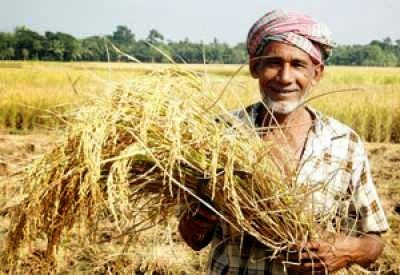India’s Looming Agricultural Crisis: A Unique Chance to Change the System?

The confluence of environmental factors and economic policies will probably trigger the large-scale migration of India’s hundreds of millions of mostly small-scale farmers and their families to the cities, completely upending the country’s social fabric and presenting the unique opportunity to finally change the system once and for all if the opposition can skillfully exploit this crisis to that end.
India faces a looming agricultural crisis brought about by the confluence of environmental factors and economic policies, one which could result in forever changing the face of what will soon be the world’s most populous country. Severe water shortages and scorching droughts are imperiling the livelihoods of India’s hundreds of millions of mostly small-scale farmers, and the recently re-elected Modi government‘s promised “Big Bang” hyper-neoliberal reforms might eventually end in a free trade deal with the US that sees American agricultural products flooding the country’s marketplace and putting its farmers out of business.
The predictable displacement of these over quarter-billion people would trigger a large-scale migration into the country’s already densely populated urban areas, compounding existing infrastructural and socio-economic problems there but with the macroeconomic “benefit” of providing low-wage labor to international corporations eager to take advantage of this trend under the cover of supporting the “Make in India” domestic manufacturing program. This would be even more so the case in the event that the so-called “trade war” encourages more Chinese-based companies to re-offshore to India, enticed by the perks that it provides.
In fact, predicting a shortage of labor that would make the “Make in India” program impossible to pull off (agriculture is the primary source of livelihood for about 58% of India’s population), it could be cynically put forth that the government’s controversial policy of so-called “demonetization” in late 2016 was designed to force the population to open up bank accounts and therefore prepare its rural majority for their eventual migration to the cities in search of work at the many international manufacturing centers that it hopes to attract within the next decade at precisely the point when the agricultural crisis is predicted to begin.
Concurrent with that, India is expecting to rely on “Israeli” expertise to assist with the hydrological aspect of this crisis while possibly replacing its domestic agricultural production with US and African imports, seeing as how the latter has 60% of the world’s uncultivated land and therefore enormous potential to feed the world if properly utilized. What this means is that India might be able to weather the physical consequences of the agricultural crisis if it succeeds in ensuring its population’s access to water and affordable foodstuffs through “Israeli” and US-African assistance respectively, thus leaving the question of what to do with the farmers.
Put another way, India’s leaders might be of the opinion that this mass migration is inevitable, so the best that they can do is try to responsibly manage it by facilitating these former farmers’ reintegration into the labor force by making it easier for them to get jobs at the international companies that they expect to flock to the country as a result of the “Make in India” program, the “trade war”, and a possible free trade deal that it might clinch with the US. The problem with this policy, however, is that it overlooks the immense social disruption that the possibly uncontrollable influx of former farmers might have on the cities that they flee to.
Despite portraying itself on the world stage as the peaceful land of yoga and Bollywood, India is actually rife with countless identity fault lines pertaining to caste, religion, ethnicity, regionalism, and linguistic nationalism, all of which could easily be exacerbated by these “Weapons of Mass Migration” and the unpredictable consequences that they could have on this already very fragile balance in the country’s cosmopolitan cities. Nevertheless, the chaos of an ultra-diverse rapidly urbanizing population that will increasingly be comprised of the proletariat in the classical Marxist sense provides a unique chance to change the entire system.
Should the opposition be skillful enough in exploiting events, this “New India” doesn’t necessarily have to turn into the Hindu Rashtra of Akhand Bharat that the ruling BJP envisions but could end up being a more egalitarian society that gets along well with its neighbors if the country’s (and more broadly, one of history’s) largest-ever social transformation is properly managed to prioritize workers’ interests and equitable development. Any efforts to reform India’s fascist economic model will be fiercely opposed by its fascist social cohorts in the streets, however, which could trigger an entirely new conflict that encompasses all the existing ones.
The broad contours of this clash would essentially be religiosity/corporatism vs. secularity/class as epitomized by the Hindu fascists and labor activists respectively, thus becoming the frame of reference through which all of the country’s many other conflicts could be understood in this future context. Should the agricultural crisis come to pass and catalyze the expected large-scale migration of former farmers to the cities, then it’s all but inevitable that the aforesaid scenario will eventually transpire too so long as the state continues along its fascist socio-economic path, but that also presents the unique opportunity to change the system once and for all.
*
Note to readers: please click the share buttons above or below. Forward this article to your email lists. Crosspost on your blog site, internet forums. etc.
This article was originally published on Eurasia Future.
Andrew Korybko is an American Moscow-based political analyst specializing in the relationship between the US strategy in Afro-Eurasia, China’s One Belt One Road global vision of New Silk Road connectivity, and Hybrid Warfare. He is a frequent contributor to Global Research.

